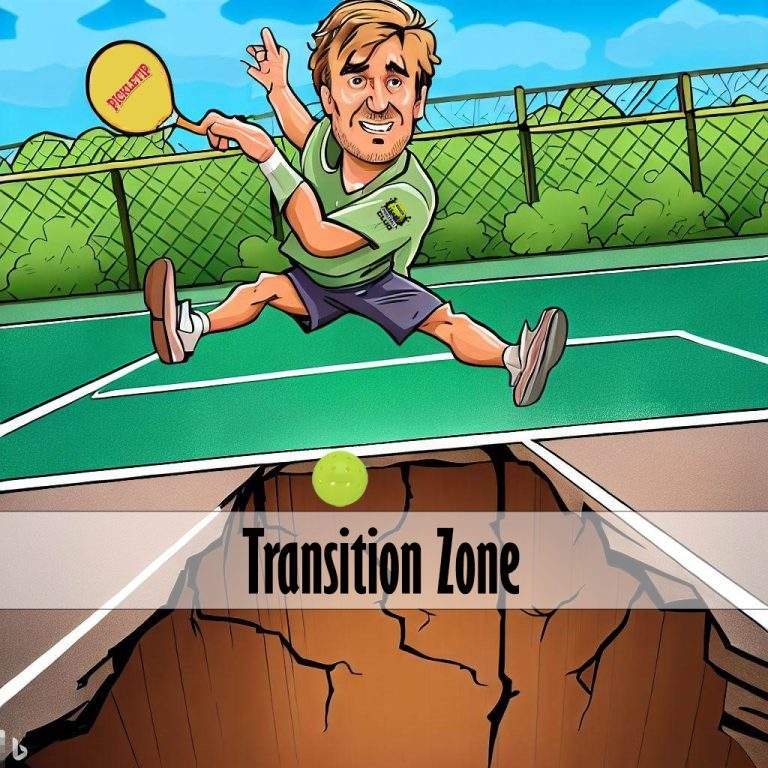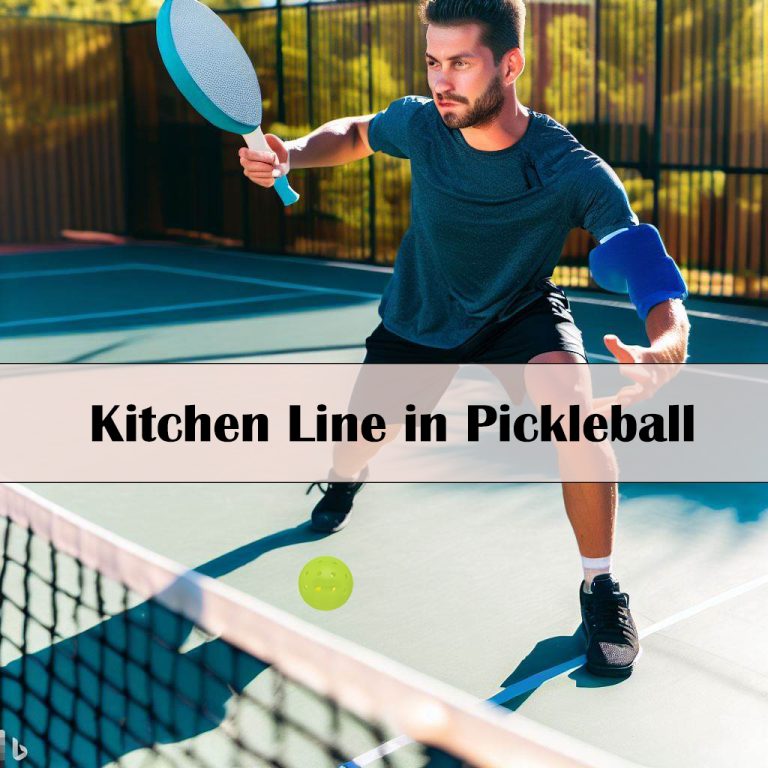Pickleball Serves for Beginners
Pickleball Serves for Beginners: Clarifying the Path to the Kitchen. Through my recent experience at a DUPR rating event, a common misunderstanding among beginners became evident. Many believe the goal is to rush to the kitchen line post-serve, irrespective of their role in the game. This guide aims to dispel such myths and offer clear instructions on when and how to advance effectively.
Common Misconceptions on Advancing in Pickleball
Many beginners mistakenly rush to the kitchen, not understanding the strategic play around the bounce rule. While pickleball rules don’t restrict movement directly, they do dictate that the ball must bounce once on each side before volleys can begin. This inadvertently guides movement strategy, emphasizing that staying back initially—when the ball must bounce—is advantageous. It’s easier to advance forward to meet the ball than to retreat backwards. This approach ensures better positioning for the crucial third shot and beyond.
When Should You Advance to the Kitchen?
Drawing from my observations, let’s break down the specific scenarios that dictate when advancing to the kitchen is advantageous. From my experience, the key to advancing effectively lies in the strategic timing of your movements.
Advancing to the kitchen line is a critical component of strategy in pickleball, but timing is everything. For the serving team, the mantra should be patience. After serving, you must allow the ball to bounce once upon its return before you consider moving forward.
Timing your move to the kitchen in pickleball is key for game control. My philosophy emphasizes the importance of net approach. Getting to the net matters, but how and when you do it makes the difference. For servers, patience and strategic positioning are essential. Wait behind the baseline until the ball returns over the net. Move forward only after executing the third shot. Stop advancing when the ball crosses the net again. At this moment, perform a split step to swiftly respond. With paddles ready, we dictate the game’s pace. We repeat this careful approach with each shot, advancing towards the kitchen. This method follows the rules requiring bounces after serves and returns. It also ensures we’re optimally positioned for offense and defense. Thus, we’re prepared for each shot, avoiding rushed movements.
Why Staying Back Initially is Key for Beginners in Pickleball
After serving in pickleball, it’s vital to wait for the return before advancing. This strategy ensures better positioning and reaction time.
Beginners might rush to the net after serving. Experience teaches the value of restraint. It’s crucial to stay back post-serve for several reasons. Firstly, it follows the bounce rule, enabling strategic play. It also improves reaction to opponent returns. By waiting, you’re well-placed for various shots. This strategy enhances your reaction time. It aids in deciding when to approach the net. Moving too soon exposes you to strategic returns. Staying back initially strengthens offense and defense. It’s vital for beginners mastering pickleball’s rhythm.
Pickleball Serves for Beginners: The Correct Moment to Advance to the Kitchen
Advance to the kitchen after the return and your successful third shot. Utilizing split steps enhances your readiness for subsequent shots.
Choosing when to move to the kitchen is crucial for your game. Don’t rush to the net after serving. Move intentionally. Start advancing after the return and a successful third shot. This approach helps you approach the no-volley zone safely, avoiding premature moves. You don’t need to reach the kitchen line quickly. Move forward in stages, adapting as needed. Use split steps to enhance shot readiness. This careful advance keeps you strategically placed. It improves your chances to control the game’s pace.
What is “Split Stepping” and Why It Matters
Split stepping boosts a player’s game, especially for beginners. It’s a small hop as the opponent hits, readying you for quick moves. Land with feet apart and knees bent. This primes you for fast, any-direction moves. Time your split step as the ball crosses the net, to be ready instantly.
Why is it important? Quick, precise movement is crucial in pickleball. Split stepping offers balance and agility for reaching various shots. It’s great for beginners lacking game pace instinct, helping them stay positioned. It improves defense and offense transitions. Essentially, it’s key for advancing in pickleball.
Pickleball Serves for Beginners: Drills to Master Movement After Serving in Pickleball
Practicing specific drills can significantly enhance your serve and footwork. These exercises are designed for pickleball beginners seeking to improve their game. Perfecting your movement after serving is a critical aspect of strengthening your pickleball game, especially for beginners on the serving team.
Serve Specific Movement Drills
Here are tailored drills to enhance your positioning and footwork post-serve:
- Baseline to Kitchen Transition Drill: Start by serving and then immediately positioning yourself behind the baseline, emphasizing the importance of staying back until the return is made. Practice moving from the baseline to the kitchen line in a controlled and strategic manner, responding to a partner or coach’s return that simulates game conditions. This drill focuses on honing your footwork and pacing, ensuring you’re optimally positioned and ready to execute the third shot. The emphasis on remaining behind the baseline initially reinforces the strategic patience required for effective play after serving.
- Third Shot Drop from Movement Drill: After serving and moving back to establish your position behind the baseline, engage in a drill where a partner feeds you simulated returns. Work on executing your third shot drop as you begin to advance towards the kitchen. The critical part of this drill is to advance only until the ball crosses the net from your third shot, then execute a split step to prepare for the incoming return. This drill emphasizes not just the execution of the third shot drop with soft hands and correct positioning but also the timing of your forward movement and the split step to ensure you’re in the best position to respond to your opponents’ plays.
- Defensive Positioning Drill: This drill begins with you serving and then immediately retreating to a position behind the baseline, readying yourself for a defensive stance against deep returns. Your partner or coach will then return deep shots, simulating scenarios that require you to cover more ground after your serve. The emphasis on starting from behind the baseline ensures you practice maintaining a defensive posture that prepares you for real-game situations, where deep returns are common. This drill enhances your ability to react and respond to deep shots, improving your overall defensive game strategy.
Drill Intent
These drills are intended to simulate real-game situations, helping serving team members understand the optimal timing and movements required after serving. Regular practice will significantly improve your ability to transition smoothly from serving to engaging in the point, setting you up for success in pickleball matches.
The Role of the Third Shot in Your Advance
The third shot in pickleball, often a drop shot, is a critical element in transitioning from the baseline to the kitchen. Mastering this shot is essential for setting up a successful advance towards the net. A good third shot drop is one that lands softly in the kitchen, making it difficult for your opponents to attack. This soft landing forces the opponents to hit an upward stroke, allowing you time to move forward.
What makes a third shot drop effective? Several factors contribute to its success:
- Height and Arc: The shot should have a high enough arc to go over the net comfortably but drop steeply into the kitchen.
- Depth: Aim for the shot to land near the kitchen line, maximizing the distance your opponents must cover to return it effectively.
- Softness: The softer the shot, the less momentum it has, making it harder for opponents to generate a powerful return.
Deciding when to advance involves watching opponents’ reactions to the third shot. If they retreat or can’t hit hard, it’s safe to move up. If your third shot is high, making attacks easy for them, stay back for defense. Timing is key to avoid being hit by smashes.
Mastering the third shot drop improves point control and game pace. An effective third shot pressures opponents and allows safe net advances. This sets up a strong offense.
Why is it a mistake to rush to the kitchen immediately after serving?
Rushing to the kitchen after serving is a common beginner mistake. It disadvantages players for several reasons. Pickleball rules require a bounce before returning a serve, adding crucial timing. Moving too quickly, especially after a deep opponent return, complicates your third shot.
Being near the kitchen line too soon limits your volley options and reaction time. This hampers controlled third shots and strategic positioning. Ideally, stay behind the baseline after serving, observing the return. This strategy lets you advance deliberately, aiming for a precise third shot.
Thus, timing your kitchen approach is key. Rushing exposes you to strong returns, while a thoughtful approach keeps you ready for defense and offense. Grasping this concept is essential for a strong pickleball foundation.
Pickleball Serves for Beginners
This guide, rooted in firsthand observations, seeks to clarify the path to the kitchen for beginners in pickleball. By understanding when and how to advance, you’ll be better equipped to navigate the court and engage in more strategic gameplay.







